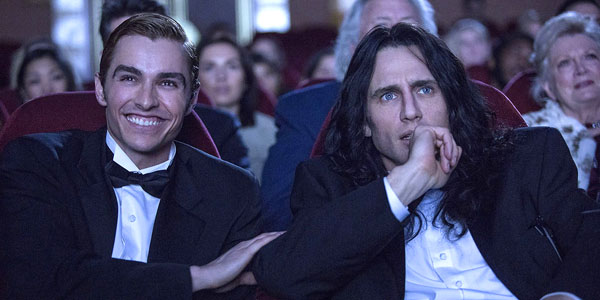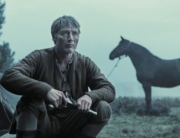What is a bad movie? And how many are still inspiring interesting discussions? Isn’t it the test of time that puts every work of art in its proper place? Bad movies have a history that is sometimes even more fascinating than the history of great movies. Some of these films, initially dismissed by critics, return from the past as essential cult films. Movies like Plan 9 from Outer Space, Pink Flamingos, or Showgirls never cease to astonish new generations of audience and filmmakers. And then there’s The Room (2003), directed and written by a mysterious Count Dracula look-a-like with an odd accent: the infamous Tommy Wiseau.
Directed by James Franco, The Disaster Artist portrays the process of creating the so-called worst movie of all time while also delving into the life of Wiseau (James Franco) and his best friend Greg Sestero (Dave Franco). Sestero feels a deep admiration for Wiseau when he proves his (lack of) talent as a free-spirited, go-for-broke performer in an acting class in San Francisco. Tommy and Greg build a strong friendship, which becomes the focus of the movie.
The two aspiring actors promise to support each other in their mutual dreams and decide to move together to Los Angeles to become Hollywood stars, like their idol, James Dean. Yet Sestero doesn’t know the true age of Wiseau (who looks considerably older than Sestero), where he comes from (Wiseau insists he’s from Louisiana), or how he makes money (the two move into an apartment owned by Wiseau). The bond between the two men is stronger than the doubts, and those three questions remain unanswered.
As mediocre actors, they failed miserably in Hollywood. After many rejections, they decided to make a movie where they would get the chance that others had denied them. Without having any real knowledge about filmmaking, Wiseau writes his own script, a drama about human nature that attempts to evoke the passion of a Tennessee Williams play. The Room was created to give Wiseau the opportunity to also play the lead role. He’s not just somebody seeking fame and fortune. He wants to be recognized as a true artist.
The Disaster Artist never changes the perception that he lacks talent, but it adds some layers of humanity and comedy to Wiseau through this tender character study. It succeeds also as a vindication of James Franco as an artist, who offers the best performance of a career full of highs and lows. Similar to Wiseau, Franco is an atypical Hollywood star whose ambitions do not always live up to reality.
Mediocre artists make terrible movies like The Room, but they can also be extremely compelling characters, which is why The Disaster Artist works. It’s unnecessary to know the story of Wiseau or The Room to enjoy it. Laughs come easily in the nearly identical re-creations of The Room’s iconic scenes and from the audience’s reaction at its premiere. (Wiseau dancing to “The Rhythm of the Night” is a highlight.) Yet Franco doesn’t make ruthless fun of Wiseau. His film offers an open discussion about tasteless art and the naivety of the dreamers: sometimes the dreams are bigger than the dreamers, but to want something (and even to have the resources to get it) will never be enough without proper talent. The real power of Franco’s film lies in the endearing portrait of the male friendship between Wiseau and Sestero—almost a love story with a breakup and reconciliation. Let’s say it’s a legit bromance.







Leave A Comment